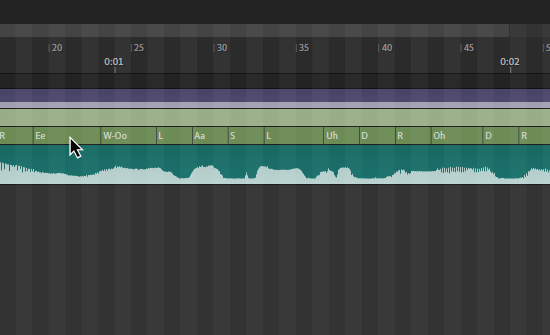
In our previous tutorial we looked at recording audio live, as well as importing a pre-recorded track and applying the lip-sync to our puppet. See that tutorial [here] .
After creating your lip-sync the result can sometimes require editing. Adobe Character Animator is great at automating the process – however it is not perfect.
If you want more control over the lip-sync , you will have to edit the visemes (or mouth shapes). I almost always do this, as I think it is a worthwhile step. However it can add many tedious hours (or days) to the process. The end result is a much stronger animation though.
Editing Visemes takes time and attention. I tend to zoom in to a word or few words at a time. You can do this using the ‘Zoom Timeline’ slider, found at the bottom right;
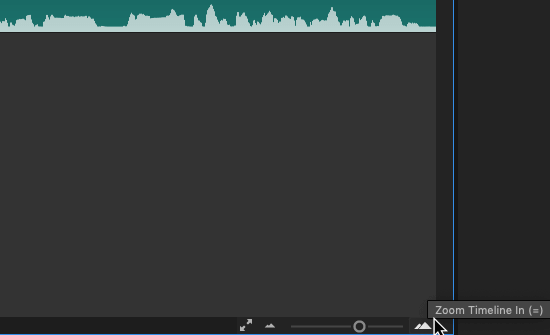
When you zoom in you should see the waveform. Underneath you should also see the corresponding visemes.
If you click and drag on the top of the ‘Timeline’ you can hear the dialogue. Hitting spacebar to start and stop the playback is also a good way to listen and view the sound and visemes.
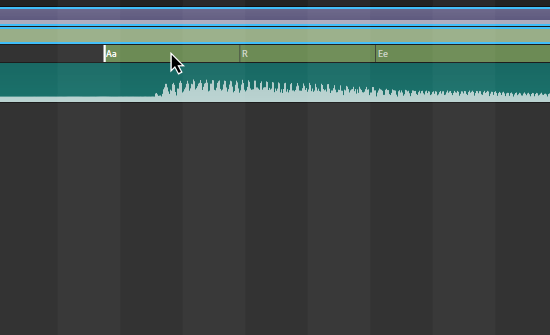
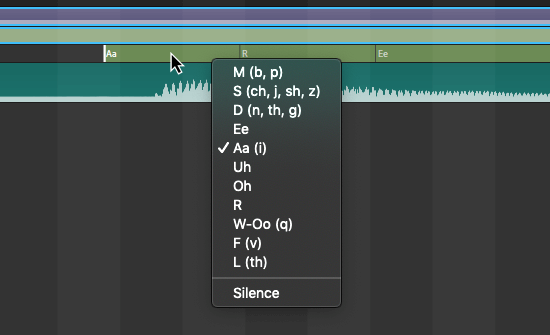
If you want to change a viseme, right mouse click and you should be given a list of options to change it to.
Sometimes you will want to reduce the amount of visemes – other times you will want to add some. It really is something you will get better at with experience. To reduce or extend a visme you can grab the edge of the box and drag it to where you’d like it.
If you want to remove a viseme, just choose ‘silence’ from the list of options and it will disappear.
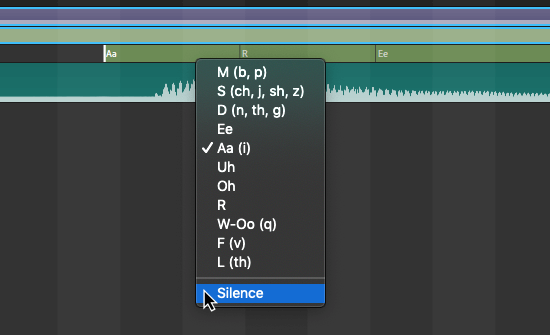
If you want to razor or cut a viseme, hold down the ‘Option’ key and hover over where you wish to make the cut. The mouse pointer should become a razorblade and you can left mouse click to slice it in half.
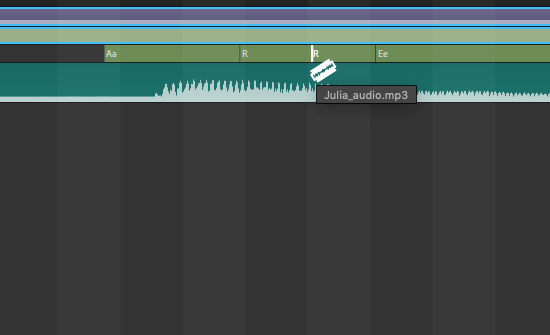
It will take a while to get used to which visemes represent which sound. For example, ‘S’ also stands for ch, j, sh and z.
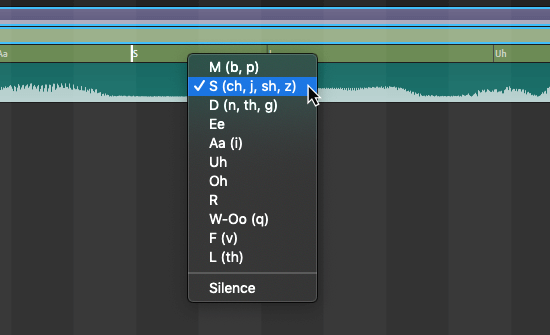
Often dialogue will move too quickly to included every viseme, so you want to emphasis the vowels and bigger sounds. Mouth-shapes like ‘F’ and ‘L’ are great to hold a bit longer on as they are more distinctive than other shapes.
Sometimes a word can use a lot of the same or very similar visemes. In these cases you will want to experiment and introduce other visemes.
You will find yourself saying the words and thinking about which mouth-shape best represents that dialogue. Some animators like to keep a mirror handy to reference their mouth saying the word.
In this tutorial we learned how to edit and refine the visemes generated from your dialogue track.
ElectroPuppet acknowledges the traditional custodians of the land, the Gumbaynggirr people.
We pay our respects to their elders, past, present and emerging.